Hot weather may help with Covid-19

Earlier in the course of the pandemic, I wrote about the lack of solid evidence linking warm weather along with more ultraviolet exposure to reduced exposure to the COVID-19 virus. As of early April, most epidemiologists and virologists expressed skepticism due to the lack of peer-reviewed evidence, especially outside of the laboratory.
Since that time, there have been additional studies of both laboratory and real-world viral responses to increased heat, humidity, and more UV exposure due to longer days. There is now some more widely accepted evidence among experts in public health and infectious disease of limited reduced viral population and transmission which can be tied to summer warmth and UV exposure.
Whatever linkage there may be, it grows in importance as more states, cities, and regions relax shutdown orders. Millions of people, having been cooped up much of the time indoors, will be anxious to test the outdoors and try to grab a semblance of a less restrictive lifestyle. In addition to the crushing economic impacts, there have been the physical and psychological effects of staying indoors as much as possible. Here in Western New York, we’re heading into our first lengthy warm period over the next week. We know what nice weather can do to social behavior. Just a couple of Sundays ago, when temperatures reached the mid 60s along with some sunshine, places like Delaware Park became crowded with runners, walkers, and bikers. There were many reports of less conscientious social distancing on that beautiful day.
Now, there will be many more such days to come. It is generally recognized that the risk of contagion is considerably less in open, ventilated outdoor spaces than in poorly ventilated indoor spaces. The caveat is this lesser contagion depends on the premise that people don’t cluster and make careless contacts.
Can the warmer weather actually help? As he stated to the Washington Post, Mohammad Jalali, an assistant professor at Harvard Medical School who has researched how weather affects the spread of viruses said, “the best way to think about weather is as a secondary factor here.”
In the last 6-8 weeks, ongoing research at Harvard and MIT has revealed viral transmission is apparently reduced more notably when the temperature reaches 77 degrees and dropped by 3.1% for each additional 1.8 degrees increase in temperature above 77. Their research tracked many weather combinations at more than 3700 observation sites to distill their findings. Here is a brief synopsis.
The research continues because other coronaviruses have displayed a seasonality with reduced transmission in warmer months, including SARS and MERS, as have many flu strains (which are not coronaviruses). A professor of meteorology at the University of Barcelona reports a significant reduction in transmission occurred in stricken Barcelona when the weather turned consistently hot (he had consulted with Spanish public health experts).
The connection with humidity is more complex. In laboratory conditions, viral particles in droplets drop to the ground more quickly in moist air than in the dry, heated indoor air more common during the cool weather season. This humidity effect has been more difficult to observe outdoors than effects from heating. It has also been shown there is damage done to the virus by the sun’s UV, though the extent of such damage is difficult to quantify, especially with varying amounts of cloud cover and uncertain exposures for large segments of the population.
With economic reopenings, more people will be able to return to work in many regions. This means more people will also return to indoor spaces, where viral populations will present a greater risk of contagion for workers and customers, despite the warmth outdoors.
For those able to enjoy the outdoors, there are activities which can be presumed as generally safe, such as swimming in chlorinated pools. Even there, virologists warn pool furniture, noodles and kickboards will need disinfection and social distancing around the pool will be important.
Pediatrics professor David Rubin at Philadelphia’s Children’s Hospital heads a lab running models which incorporate weather data into helping estimate when easing of shutdowns may be safer. He told the Washington Post: “Clearly, I believe weather is impacting it — it’s just not impacting it enough to completely eliminate transmission. That’s why we’re still seeing cases in Florida and Texas and Tennessee. It seems to be preventing a big exponential rise in cases.”
There continues to be a scientific consensus among experts there is no reason to expect a massive reduction of infection in the summer. That is not to say reductions will be insignificant, but no one should expect the virus to pull a near-disappearing act during the summer. Some of the warm weather potential to temporarily reduce contagion can easily be lost by people dropping their social distancing guard and engaging in careless clustering and contacts. That part of it is on us.
A new study conducted by Princeton University and the National Institutes of Health projects weather can produce more seasonality and warm weather reductions if and when there is more widespread immunity in the population, in future years.
There is a fair amount of still inconclusive evidence the worst mortality rates will be centered in areas with a temperate climate and cooler weather. While there have been large outbreaks in some tropical regions, the worst outbreaks have more often been in the temperate zone. The consensus among the experts predicts new waves and spikes will worsen again in the fall, even if warm weather does mitigate contagion during the summer. What is not known is how large these waves and spikes will be, and how much serious additional stress on the health care system will be due to the return of the flu season at the same time.
In the meantime, the best we can hope for according to the Harvard and MIT researchers is this: “Our projections suggest warmer and more humid times of the year, and locations, may offer a modest reduction in reproductive number; however, upcoming changes weather alone will NOT be enough to fully contain the transmission of COVID-19.”

